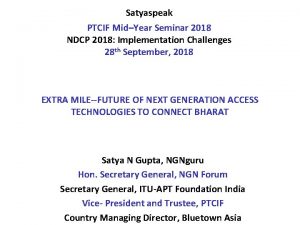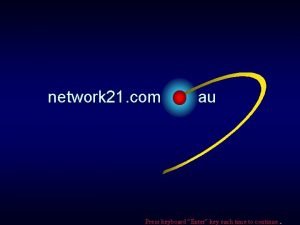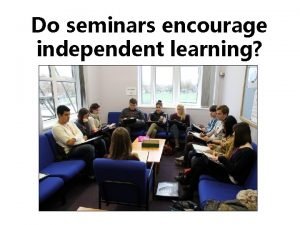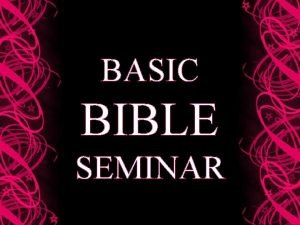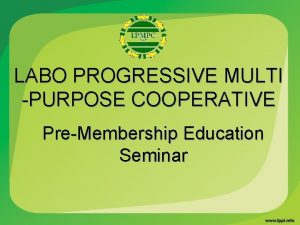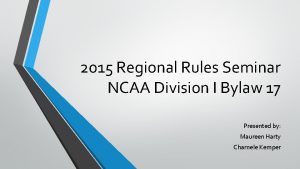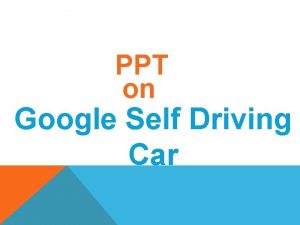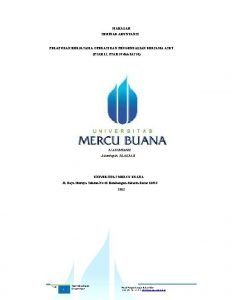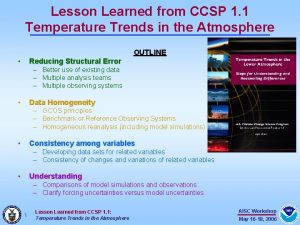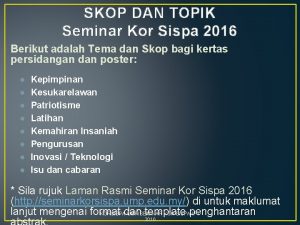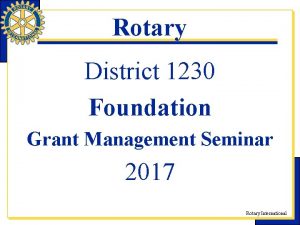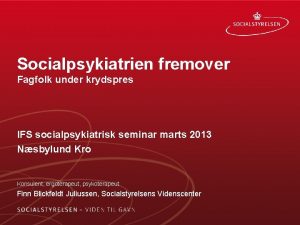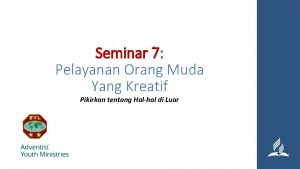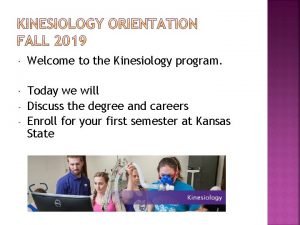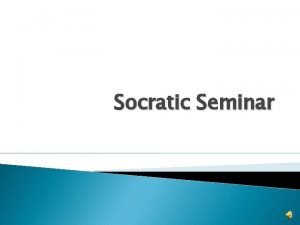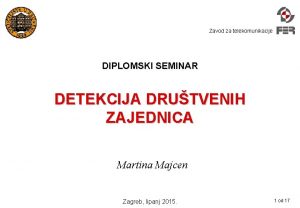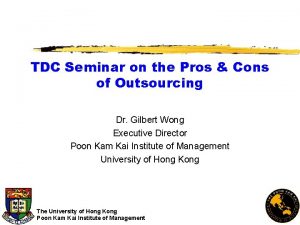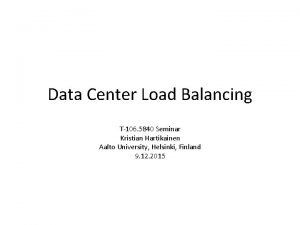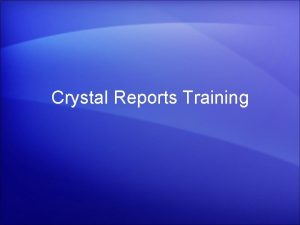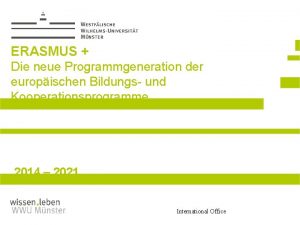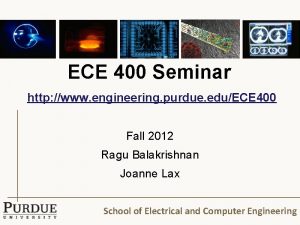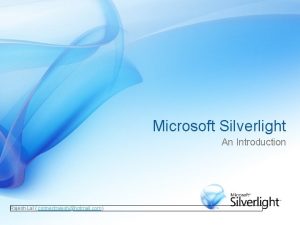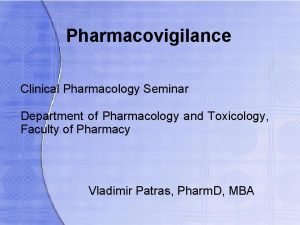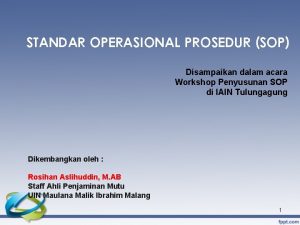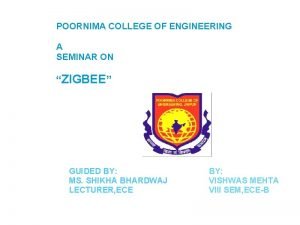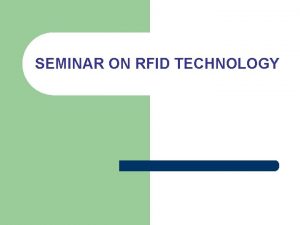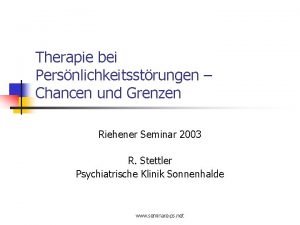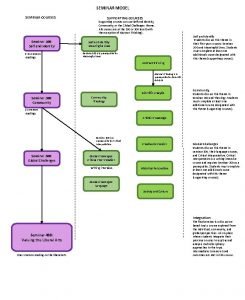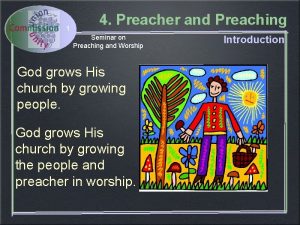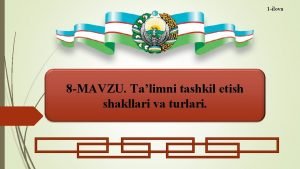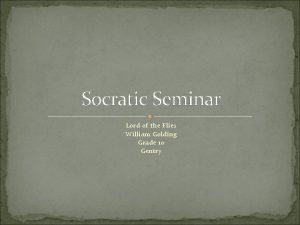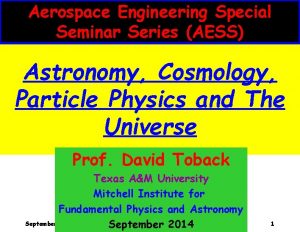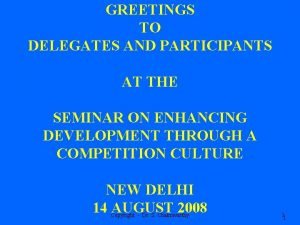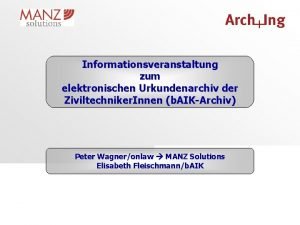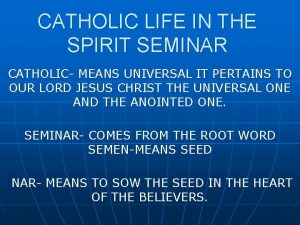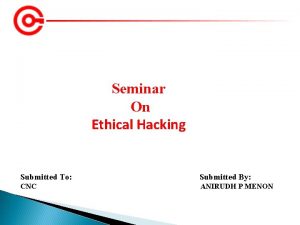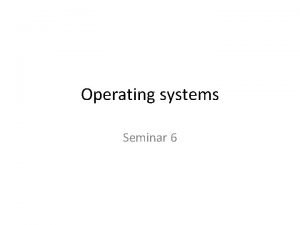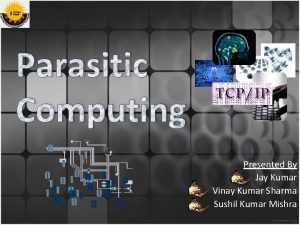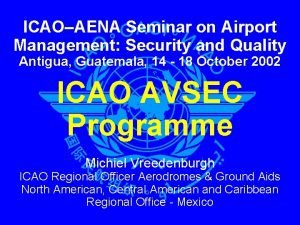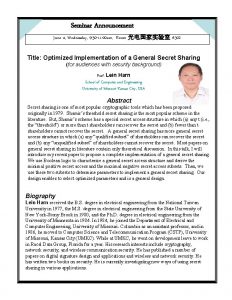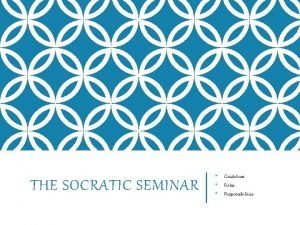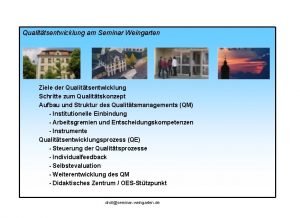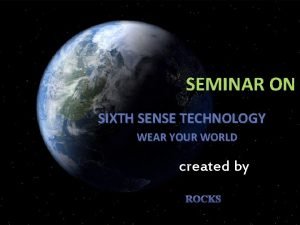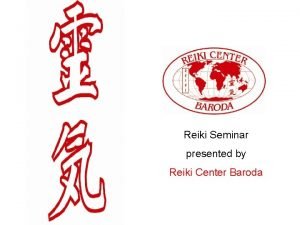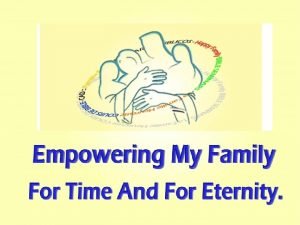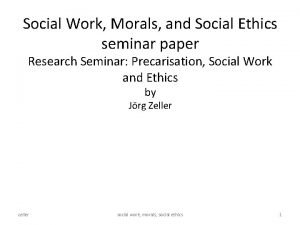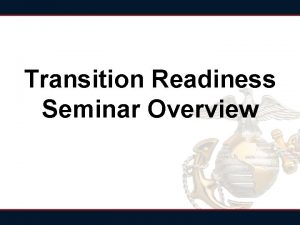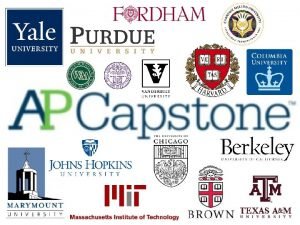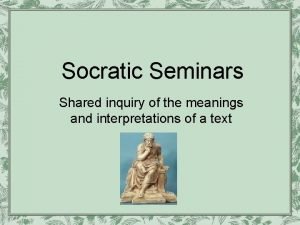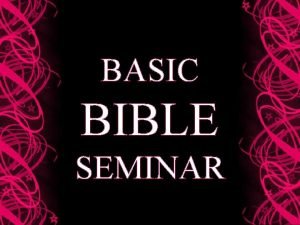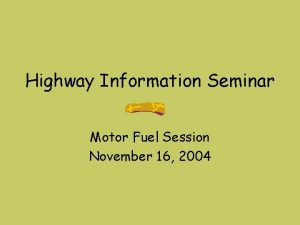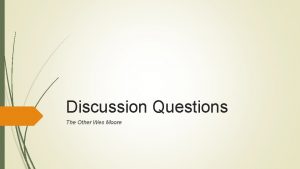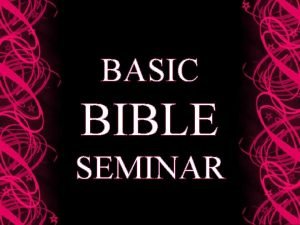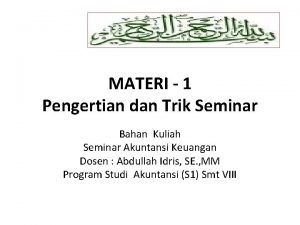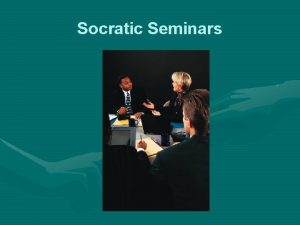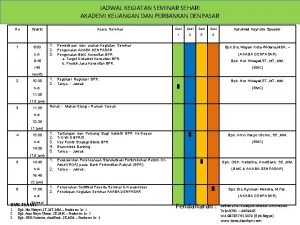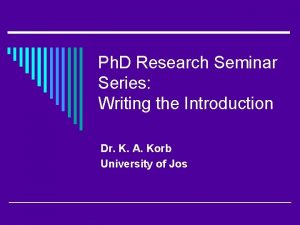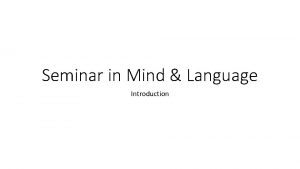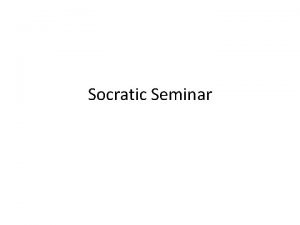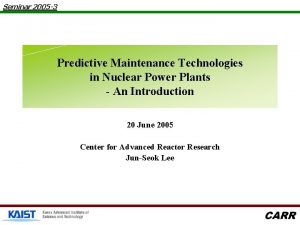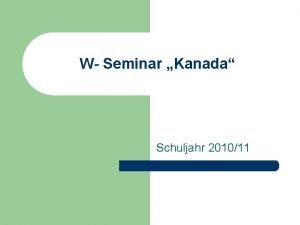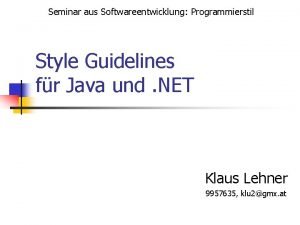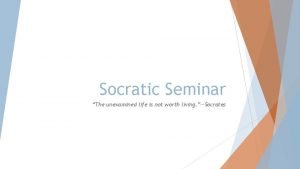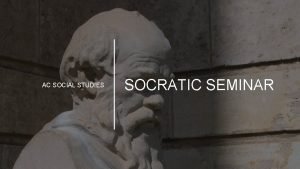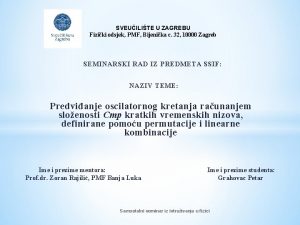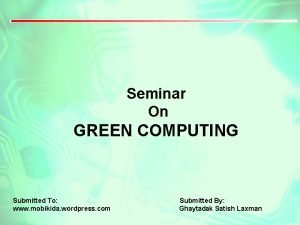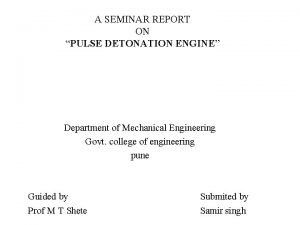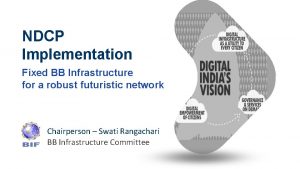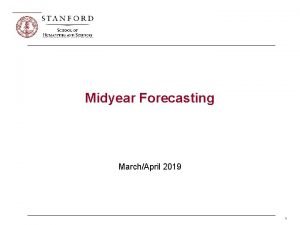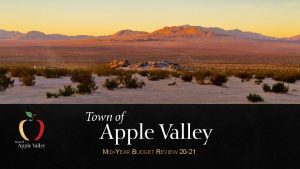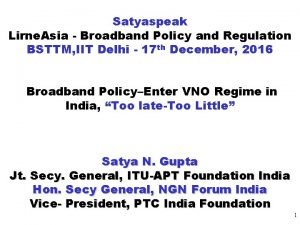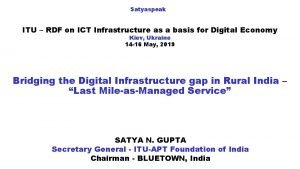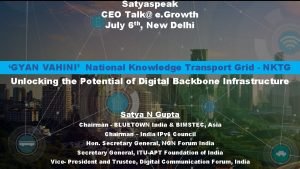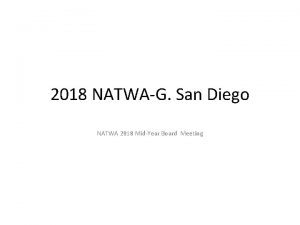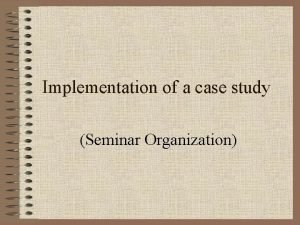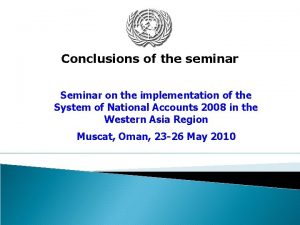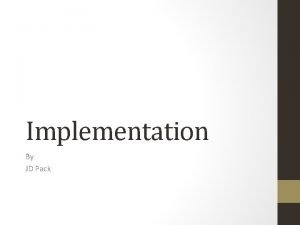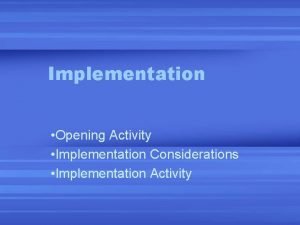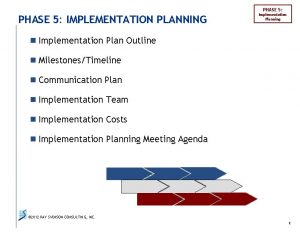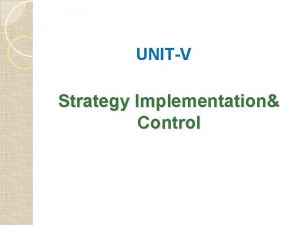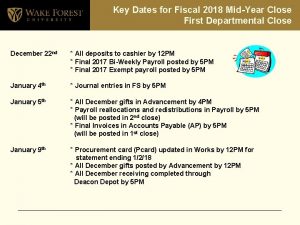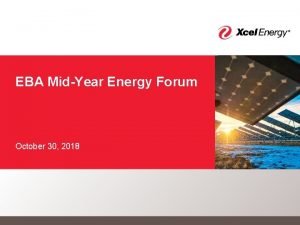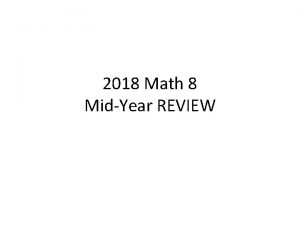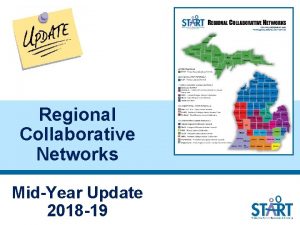Satyaspeak PTCIF MidYear Seminar 2018 NDCP 2018 Implementation






























































































































- Slides: 126

Satyaspeak PTCIF Mid–Year Seminar 2018 NDCP 2018: Implementation Challenges 28 th September, 2018 EXTRA MILE FUTURE OF NEXT GENERATION ACCESS TECHNOLOGIES TO CONNECT BHARAT Satya N Gupta, NGNguru Hon. Secretary General, NGN Forum Secretary General, ITU APT Foundation India Vice President and Trustee, PTCIF Country Managing Director, Bluetown Asia

Emerging Drivers in ICT – Technology and Connectivity Advancing Everyday “Any advanced Technology is indistinguishable from Magic” Arthur C. Clarke • Increased speed and density of Integrated Circuits Devices becoming Faster, Cheaper, more Powerful, Parallel Computation (Moore's Law CPU processing power doubles every 18 months). • Enhanced Transmission capacities on Optic Fiber Networks and Networking Flexibility (Gilders Law OFC carrying capacity doubles every 6 months). • Capacity Growth and new Application Services on Wireless (Coopers Law wireless capacity doubles every 30 months). • Networking Effect ( Metcalf’s Law) Value of a network increases proportional to the square of no. of its connections. Dollar for Data (Personal Information). • Zuck’s Law Amount of information shared in world doubles every two year Deep Algorithm, Machine Learning, AI, QOS based multimedia traffic on IP based networks (VOIP, IPTV, VOD, UC, FMC), IPV 6, IOT, M 2 M, D 2 D, IOE, BYOD. • Cloud and Open Software (APIs) and Knowledge discovery through Big Data, VR, AR, Cognetics, SMAC, Network Functions Virtualisation (NFV), Cloudification, IOTisation. 2

Future Play of Connectivity in India – Enabling “Broadband for All” National Digital Communications Policy (NDCP 2018) i. iii. iv. v. vii. GOALS 2020 Provide Universal broadband coverage at 50 • Mbps to every citizen Provide 1 Gbps connectivity to all Gram Panchayats of India by 2020 and 10 Gbps by • 2022 Enable 100 Mbps broadband on demand to all key development institutions; including all educational institutions Enable fixed line broadband access to 50% of households Achieve ‘unique mobile subscriber density’ of 55 by 2020 and 65 by 2022 Enable deployment of public Wi Fi Hotspots; to reach 5 million by 2020 and 10 million by 2022 (Currently only 36 K) • Ensure connectivity to all uncovered areas ( Broadband for All on Demand) • STRATEGIES Establishing a ‘National Broadband Mission – Rashtriya Broadband Abhiyan’ to secure Universal Broadband Access Implementation of the following broadband initiatives, to be funded through USOF and Public Private Partnerships: i. Bharat. Net – Providing 1 Gbps to 2. 5 Lakhs Gram Panchayats upgradeable to 10 Gbps ii. Gram. Net – Connecting all key rural development institutions with 10 Mbps upgradeable to 100 Mbps iii. Nagar. Net – Establishing 1 Million public Wi Fi Hotspots in urban areas iv. Jan. Wi. Fi – Establishing 2 Million Wi Fi Hotspots in rural areas Implementing a ‘Fibre First Initiative’ to take fibre to the home, to enterprises and to key development institutions in Tier I, II and III towns and to rural clusters: Facilitating Fibre to the tower programme to enable fiberisation of at least 60% base stations thereby accelerating migration to 4 G/5 G/Wi Fi

What is All IP Next Generation Access ( NGA)? • Next Generation Services – Converged (quad play, voice, data, video, mobile) • Next Generation Access – High speed (Broadband) IP based connectivity (ADSL, VDSL, LTE, Cable TV, FTTH, PLC, Wi. Fi, Li. Fi, Fi. WI, White Spaces) • Next Generation Transport Packet Transport Network (PTN) • Next Generation Architecture – Service oriented, Layered (Transport, Control, Application) • Next Generation Mobile – Vo. LTE, IMT Advanced, 4 G, IMT 2020(5 G) • Next Generation Internet – IPv 6 • Next Generation Interconnect – Capacity and Quality based • Next Generation Licensing – Unified and Class Licensing • Next Generation Regulation – Converged (Single Regulator for ICE) 4

Evolution of Last Mile Technologies Next Generation Access( NGA) • Use of Coaxial Cable for Telecom Services (Cable TV Network for Broadband telephony local loop). • Use of XDSL technologies on traditional Copper Loops. • Wireless Broadband Access for Fixed ( Wi. Fi) and Mobile ( 4 G, 5 G). • VSAT based Access in remote areas. • Power line based Access (BPL), Li Fi • Free Space Optics (FSO), Fi Wi • FTTX ( FTTC, FTTP, FTTB, FTTH, FITH, GPON)

Technology Alternatives for Wireline Broadband Access Evolution of Wireline Technologies i) Use of Digital Subscriber Loop (DSL) technology on traditional Copper Loops (DIY, Franchising, Shared Unbundling, Bit stream)/ Active Loop Access, VULA) – Asymmetric DSL (ADSL) – 1 Mbps upstream/ 8 Mbps downstream, 3 Km – ADSL (G. Lite) – Splitter free, 512 Kbps upstream/ 1. 5 Mbps downstream, 5. 4 km – Symmetrical DSL – 1. 5 Mbps, 3 Km – Single pair High speed DSL (SHDSL) – 2. 3 Mbps symmetric, 3 Km – ADSL 2, ADSL 2 plus – 8/24 Mbps, 2 Km – Very high Data Rate DSL (VDSL) – 52 Mbps, 1. 5 Km – Vectoring with VDSL (Vec. VDSL 2+) 100 Mbps, 1. 5 Km. – Bonding+Vectoring+MIMO 800 Mbps, 1. 5 Km – G. fast (ITU) 1 Gbps, 1. 0 Km.

Copper (Telephone) Access • Telephone networks have provided connectivity to users for decades – The network that connects users across countries, and between countries, is called the Public Switched Telephone Network (PSTN) – The service delivered to the end user is called the Plain Old Telephone Service (POTS) – The access line in most telephone networks is a twisted pair copper cable between a local telephone exchange and the home (or apartment/office) – Wide availability of telephones meant data communications adapted to make use of the network • Dial up Internet Access • Integrated Services Digital Network (ISDN) • Digital Subscriber Line technologies – ADSL, HDSL, VDSL, … 7

PSTN • Multiple users connect to a local exchange via Unshielded Twister Pair • Exchanges are connected in a hierarchy across cities, countries and the world – Originally using copper, but now using coaxial, satellite and fibre 8

PSTN 9

Dial Up Access • Dial up access over telephone lines – Modem converts digital data from computer into analog signal to be sent over telephone line (instead of analog voice) • Telephone system limits bandwidth to 4 k. Hz (although copper cable can carry more) • Maximum data rate 56 kb/s 10

Digital Subscriber Line • Copper line can actually transmit about 1 MHz spectrum – DSL technologies make use of most of this 1 MHz (except the 4 k. Hz for voice) – Digital signals are sent from home (modem) to exchange (multiplexer) – Different types of standards ADSL Example use of copper line spectrum 11

Digital Subscriber Line 12

Digital Subscriber Line • Asymmetric Digital Subscriber Line (ADSL) – Larger bandwidth (and hence data rate) for downstream (exchange to you) than upstream (you to exchange) traffic • ADSL Multiplexers (in exchange) can support larger bandwidths on transmission • Well suited to many Internet applications, e. g. web browsing, email – ADSL can adapt data rate depending on amount of noise on line • Lower speeds for longer distances and poor quality copper cables – Key Features: • Makes use of widely installed telephone network • Supports basic voice and video applications 13

Digital Subscriber Line • Other DSLs: – ADSL 2, ADSL 2+ – High Data Rate DSL (HDSL) – Symmetric (High Speed) DSL (SDSL, SHDSL) – Very High Speed DSL (VDSL, VDSL 2) ITS 413 - Network Technologies 14

Coaxial Cable Access • Coaxial cables have been used to deliver cable TV to many homes – Cable operator has a separate physical network than telephone network • Coaxial cable network can be used to deliver data to a home – Coaxial cables typically shared medium between homes in neighbourhood • Point to multipoint topology • More people using at the same time, the lower throughput for you – DOCSIS is standard for Data over Cable Service Interface Specification – Data rates (down/up) : • 6 Mb/s / 768 kb/s • 30 Mb/s / 1 Mb/s • Key features: – Generally faster than ADSL, although shared medium – Can avoid paying for telephone line (if use Voice over IP) 15

Optical Fibre Access • Optical fibre mostly used in core (not access) networks • However, delivering fibre to the end user is possible – Instead of (or as well as) copper and coaxial cables – Referred to as Fibre To The Home (FTTH) or Premise (FTTP) or Building (FTTB) – Point to multipoint topology • Single optical fibre to a building (or multiple buildings) is shared by 10 to 30 users – Typical speeds offered are 100 Mb/s (but shared between users) • Key features: – Allow much higher data rates than copper and coaxial cable – Support data (Internet), voice and video (e. g. digital TV) – Requires installation of optical fibre 16

Options for Next Generation Access (NGA) Fixed ADSL 2+ FTTC (+VDSL) FTTH (Buildings) Downstream Headline 8 Mbit/s 24 Mbit/s 40 Mbit/s 100 Mbit/s Downstream Typical 5 Mbit/s 10 Mbit/s 20 Mbit/s 50 Mbit/s Upstream Headline 0. 8 Mbit/s 10 Mbit/s 30 Mbit/s Upstream Typical 0. 4 Mbit/s 5 Mbit/s 15 Mbit/s Cost of Deployment USD 75/Line (Existing Cu Line) USD 100/line (Existing Cu Line) USD 200/ line ~USD 250/line

NGA Deployment Scenario FTTX • FTTN – Fiber to the node • FTTC – Fiber to the cabinet/curb • FTTB/P – Fiber to the building/premises • FITH/FTTH – Fiber in the home Source: Wikipedia

PON (Passive Optic Network) Topologies Source: DSTI/ICCP/CISP(2007)4/FINAL

PON TDM

Future of Next Generation Access (NGA) – Fiber In the Home (FITH) 1. Enables Superfast Broadband applications to customers. (>100 MPBS) 2. Green technology 3. Future proof 4. Enables real time High Definition Multimedia, Convergence, Collaboration, Work from Home and Innovations

Case Study UK Legacy Network Copper PSTN K Stream Leased lines DSL PDH access ATM IP Fibre SDH VC-12 SDH access SDH VC-4 PDH access PDH End User ~ 5. 5 k sites ~ 2 k sites ~ 1 k sites ~ 400 k sites 22 ~ 100 k sites ~ 15 k sites

Case Study UK Legacy Access Core network Backhaul Local Exchange (5. 6 k) ~ 4 m Distribution Points (Lines split almost 50: 50 between overhead & underground) Current LLU demarcation point E-side Cables ADSL 1 Today’s Broadband Downstream Headline 8 Mbit/s Downstream Typical 5 Mbit/s Upstream Headline 0. 8 Mbit/s Upstream Typical 0. 4 Mbit/s Street Cabinet ~90 k D-side Cables Overhead Distribution Telephone Pole ~8 m Customer Home ~26 m Underground Distribution 23

Case Study Next Generation Network, BT’s 21 CN Multi-Service Access Nodes Converged Core Softswitch/ IMS Copper IP-MPLS-WDM Fibre & Copper Content Wireless End User -5. 5 k sites -100 sites 24 ISP WWW

Active Access Network Technologies • IEEE 802. 3 Ethernet family • Copper (Telephone) Access • Coaxial and Optical Fibre Access • Wireless – IEEE 802. 11 Wireless LAN family – Bluetooth (and other short range wireless) 25

IEEE 802. 3 Ethernet Family • Very popular LAN technology – Originally point to multipoint, but now mainly point to point, switched communications – Data rates have been increased over time: 10 Mb/s, 100 Mb/s, 1 Gb/s, 10 Gb/s, … – Very cheap devices, easy to install network • Because of popularity, has been adapted to non LAN applications: – Long distance links using 10 Gb/s (MANs, WANs) – Interface between devices (router/switch, Storage Area Networks) 26

Wi Fi : A killer technology to bridge ‘Access Divide’ 1. Ubiquitous – Each smart device (including Mobile Phones) is Wi Fi enabled. 2. Uses unlicensed spectrum (ISM Band) which is free. 3. All IP Technology which is very efficient and future proof which is based on open and ever evolving standards of IEEE (802. 11 x). 4. Plug n Play ecosystem. 5. Low Power consuming and Low Cost – overall infra cost about 10% of licensed mobile infrastructure. 6. Potential to conserve scarce licensed spectrum through Mobile Data Offload (MDO). 7. NINENP (Non- Interfering, Non-Exclusive, Non-Protected) – Free for All. 8. Current Hotspots in India – 36, 000 (mushrooming everywhere). 9. Potential to deliver 4 G and 5 G type services through upgradation. 10. Ideal futuristic platform for Io. T, M 2 M and E Health.

Using Multiplier effect of an idea whose time has come. Archimedes Principle “Look at the world around you. With the slightest push, at just the right place, it can be tipped’’ “Give me a rod (mast) long enough strong enough and we can change the life style of the rural folks”

Everything On Tower(EOT) Connecting Bharat (5 Ls Low Cost, Low Power, Low Maintenance, Local Control, Local Content) From Telcos/Bharatnet Node Unlicensed Microwave/ Sattelite Omni/sector Antennae Filter Access point BTS(Controller) + Power unit +Battery(li ion) + Content server Solar Panel Unwired rural tower/mast/pole/structure (5 15 m )

Promising Role of Wi Fi and Un licensed Technologies in 5 G Technology perspective ► Potential to power high‐priority industry verticals – smart cities, Io. T sensors and safety / surveillance Business case and service development ► 5 G to be a combination of licensed and unlicensed technologies ► Spectrum allocation and regulation on radar ► Wi‐Fi ‐ leading unlicensed technology under the 5 G umbrella Standardisation is critical Convergence and co existence ► Progress underway and likely before 2020; licensed and unlicensed bridge needs fast‐ tracking ► Co‐existence, convergence, certification and operator guidelines are major gaps toward 5 G ► Convergence of services currently a hot topic for the industry ► Co‐existence of technologies in a 5 G era to leverage efficiency levels over Wi‐Fi networks

IMS –Standard based Architecture for Service Control • IMS defines an open IP based Service Control layer where service intelligence is located in the servers and mobile devices. • IMS as originally specified by 3 GPP, was aiming to enable real time multimedia services over the IP bearer in GSM and W CDMA networks. • 3 GPP 2 defined later the MMD for CDMA 2000 networks which is now aligned with IMS. • TISPAN provided the control specifications for DSL access. • Cable. Labs provided the specifications for the cable access and now their work together with 3 GPP to incorporate PC 2. 0 specifications into IMS release 8. If IMS is not used: ü Multimedia communication at best effort • Since release 6, interworking with WLAN (Wi fi) is supported. ü Service orchestration can be complex • IMS has further evolved to become truly Access agnostic and server based ü Provisioning and charging are service specific ü Service roaming can be difficult to implement ü Future Virtualisation can be an issue

IMS Compelling Salient Features • Being Open and Flexible, advantages over other systems like Softswitch (Properitery, Hardware based, Rigid): • Independent of a particular access technology • Integrated mobility for all network applications • Easier Convergence of applications from fixed to mobile users (FMC) • Faster deployment of new services based on standardized architecture (SOA) • End of customized applications ( General Purpose, Open) • New applications such as presence information, videoconferencing, Push to talk over cellular (POC), multiparty gaming, community services , content sharing , multi media etc. . • Evolution to combinational services, for example by combining instant messaging and voice • User profiles are stored in a central location • Deployment based on General Purpose Servers and evolutionary (Future proof)

Definition of Next Generation Network (ITU) “NGN is a Convergent, Multimode (fixed and mobile) access platform based on the IP and horizontally integrated (Recommendation ITU T Y. 1001) and consolidating the Technologies, Network solutions and the electronic communication Services such as Data, Voice, Audiovisual Content or other Applications. It has a Layered, Packet mode Architecture (Recommendation ITU T Y. 2001), facilitating the delivery of multiple Services over a single Infrastructure. ” This Architecture includes: Application layer (APIs); Service Control layer independent of physical Infrastructure; Packet mode Transport/Access layer (ATM, IP, etc. ); Standardized Open Interfaces between layers (ANI, NNI, UNI) 33

All IP NGN Architecture – Layered Approach Application Service Control Transport 1 NGN Model

Move towards 5 G • 5 G simply stands for fifth generation and refers to the next and newest mobile wireless standard based on the IEEE 802. 11 ac standard of broadband technology, although a formal standard for 5 G is yet to be set • 5 G mobile technology has changed the means to use cell phones within very high bandwidth. • According to the Groupe Special Mobile Association (GSMA) to qualify for a 5 G a connection should meet most of these eight criteria: – Up to 10 Gbps data rate > 10 to 100 x improvement over 4 G and 4. 5 G networks – One millisecond end to end round trip delay – 1000 x bandwidth per unit area – 10 to 100 x number of connected devices – (Perception of) 99. 999 percent availability – (Perception of) 100 percent coverage – 90 percent reduction in network energy usage – Up to ten year battery life for low power, machine type devices

5 G Network Architecture The 5 G network architecture consists of all RANs, aggregator, IP network, nanocore etc. The 5 G protocol stack consists of Open Wireless Architecture, lower and upper network layer, open transport protocol and application layer

Features of 5 G • • • Greater speed (enough to download a movie in few seconds) Greater capacity(1, 000 times capacity of 4 G) Reduced Latency(stop delays) Provide high resolution and larger bandwidth It will gather networks on one platform Lower battery consumption Simultaneous connections can work together Provide uninterrupted and consistent connectivity. Allow access to parallel multiple services The remote diagnostics also a great feature of 5 G technology

Technological Challenges for 5 G • Inter cell Interference There is variations in size of traditional macro cells and concurrent small cells that will lead to interference. • Efficient Medium Access Control In a situation, where dense deployment of access points and user terminals are required, the user throughput will be low, latency will be high, and hotspots will not be competent to cellular technology to provide high throughput. • Traffic Management Machine to Machine (M 2 M) devices in a cell may cause serious system challenges i. e. radio access network (RAN) challenges, which will cause overload and congestion.

Comparison between 4 G and 5 G Specifications Forth Generation (4 G) Fifth Generation (5 G) Peak Data Rate 1 Gbps 10 Gbps Data Bandwidth 2 Mbps to 1 Gbps 10 Gbps and higher as per need Spectral Efficiency 30 b/s/Hz 120 b/s/Hz TTI (Transmission Time Interval) 1 ms Varying (100 µs (min. ) to 4 ms (max. ) ) Latency 10 ms (radio) <1 ms (radio) Mobility 350 Kmph 500 Kmph Connection Density 1000/Km 2 1000000/Km 2 Frequency Band 2 to 8 GHz 3 to 300 GHz standards Al access convergence including OFDMA, MC‐CDMA, network‐LMPS CDMA and BDMA technologies Unified IP, seamless integration of broadband LAN/WAN/PAN and WLAN Unified IP, seamless integration of broadband LAN/WAN/PAN/WLAN and advanced technologies based on OFDM modulation used in 5 G Multiple Access CDMA, BDMA Core network All IP network Handoff Horizontal and vertical Flatter IP network, 5 G network interfacing(5 G‐NI) Horizontal and vertical

How 5 G Will be Built Eventually 5 G will encompass many wireless technologies, including 5 G New Radio, Gigabit LTE for super fast speeds; LTE Io. T for low power, long battery life, and long range coverage; Digital TV, C V 2 X*, or vehicle to everything; and ultra low latency. 5 G will build on the architecture of voice (2 G); voice, video, and data (3 G); and massive mobile data (4 G)—and add massive bandwidth and density, as well as ultra low latency. 5 G also will integrate aspects of Wi. Fi and long range/low power networks. *C V 2 X – Cellular Vehicle to Everything: Vehicle‐to‐vehicle (V 2 V) and vehicle‐to‐infrastructure (V 2 I) communication, collectively referred as V 2 X, is a wireless technology aimed at increasing road safety and improve traffic management, introducing a new concept of intelligent transport system (ITS), capable to reduce environmental impact. V 2 X technology is based on 5. 9 GHz Dedicated Short Range Communication, a derivative of Wi‐Fi specifically defined for fast moving objects. It allows vehicles to communicate their state, such as their position and speed, to surrounding vehicles and infrastructures even in non‐line‐of‐sight condition, such as behind a building or a curve.

Path to 5 G • Basic Purpose is to continue to evolve the current LTE standard towards reaching the 5 G specifications. • The standard looking to become a rather large, all encompassing wireless communication system that not only caters for faster data speeds, but also supports many more devices online at the same time with greatly reduced latency. • Groups working on the early trials of 5 G has come up with two views • The Hyper-Connected Vision: create a blend of pre existing technologies covering 2 G, 3 G, 4 G, Wi Fi and others to allow higher coverage and availability enabling M 2 M/D 2 D & Io. T. • Next-Generation Radio Access Technology: This is more of the traditional ‘generation defining’ view, with specific targets for data rates and latency being identified, such that new radio interfaces can be assessed against such criteria.

Next Generation WAN 4 G Massive Mobile Data Gigabit LTE 3 G Video, Voice & Data 2 G High Quality Voice & SMS LTE Io. T Vehicle Ultra Low Latency Ultra Dense Deployment 5 G

Timeline for 5 G Radio 2017 3 GPP Standards Release 14 2018 Release 15 2019 Release 16 2020 Fixed Wireless Access 5 G Mobile (NSA) 5 G Mobile (SA) LTE Evolution *This timeline does not reflect commercial availability. NSA = Non-Standalone (5 G using LTE Core) SA = Standalone (5 G using 5 G Core)

Emerging Applications and Services Enabled by 5 G Verticles Education Drivers Remote delivery Immersive experiences Video streaming Augmented reality/ Virtual reality Industrial automation Massive Io. T networks Video streaming Augmented reality/ Virtual reality Embedded devices, advanced robotics Io. T sensors and networks Manufacturing Health Care Smart Grid Entertainment Enablers Remote diagnosis and Intervention Long term monitoring Intelligent demand/ supply control Powerline communication Immersive gaming and media industry Multimedia experience at 4 k, 8 K resolution Video streaming Augmented reality/Virtual reality 5 G Requirements Large bandwidth Low latency High connection density Ultra reliability Low power consumption Low power High throughput Low latency High reliability Broad coverage of network Low latency Large bandwidth Low latency

Contd……. . Verticles Automotive / Autonomous Cars Collision avoidance Intelligent navigation and transportation systems Smart Cities Drivers Connected utilities, Transportation, Healthcare, Education and all amenities Enablers Vehicle‐to‐vehicle (V 2 V), Vehicle‐to‐infrastru cture (V 2 I) and other intelligent transport systems (ITS) Massive Io. T networks Automation Cloud infrastructure Artificial intelligence 5 G Requirements Large bandwidth and low latencies (< 5 ms) and high connection reliability (99. 999%) Large bandwidth High throughput High connection density Low latencies Possible future extensions and verticals might also include the following: Aerospace Ocean Threat response Mobile platform Terrestrial and distributed computing (cloud/Io. T fog)

Global 5 G Initiatives EU Programs CHINA KOREA JAPAN Programs Horizon 2020 /5 GPPP/5 GIA IMT 2020 Promotion Group 5 G Forum 5 GMF Goals/ Outcomes 3 GPP+ DECT Enhancements Focus on 500 kph Mobility Focus on ITS Focus on UHDV, new radio and tech beyond 5 G Key Milestones In sync with IMT 2020 Rollout in 2020 Olympics 3 Pillars UHDTV, 5 G, ITS, 2019 Rugby World Cup Funding Model EU 5 Billion PPP 2 Billion USD funding – EU 700 Mn seed funding Govt. EU Commission MIIT, NDRC and MOST SDO (Members) ETSI (>800) CCSA (474) TTA (205) ARIB (189) Other Participants Industry/SMEs operators, service providers, researchers Io. T/Cloud/Big Data/Mobile, industry, academia, R&D

5 G Industry Progress Around the World 2017 2018 Trial • 28 and 39 GHz • Fixed Wireless Access, e. MBB 2018 2019 Trial • 3. 4 3. 8 GHz • e. MBB, Io. T USA Europe 2017 Trial, 2019 Commercial • 3. 4 3. 6 and 4. 8 5 GHz; uplink sharing with sub 2 GHz • e. MBB, NB Io. T China Korea 2017 Trial,2019 commercial • 28 GHz, 3. 4 3. 7 GHz • e. MBB Japan 2017 Trial, 2020 Commercial • 3. 6 4. 2 and 4. 4 4. 9 GHz, and 28 GHz • e. MBB

INDIA Specific Challenges Using TECHNOLOGY to Leapfrog Socio Economic Development Area Population (million (in Billion) sq km) GDP nominal (Trillion $) Average Watts/ Person USA 24. 71 0. 579 38. 1 1378‐USA Europe 10. 18 0. 743 19. 07 651 ‐ EU USA + Europe 34. 89 1. 323 57. 0 China 9. 597 1. 379 11. 2 492 India 3. 287 1. 324 2. 64 87 Unique Challenges: 1. Rural Broadband for all – Fibre to Panchayat 2. Diversity ++ language culture last mile geographical 3. Greenfield deployment 4. Leapfrog Technology Solutions

Role of Different Bands in 5 G 24‐ 70 GHz Typical Bandwidth ~1 GHz HOTSPOT/CAPACITY LAYER 3‐ 10 GHz Typical Bandwidth 10‐ 100 MHZ CAPACITY LAYER Below 3 GHz Typical Bandwidth of 10‐ 20 MHz BASIC COVERAGE LAYER

Networking Architecture of 5 G Ø OSI Layers 5 G mobile network layer

• OWA stands for Open Wireless Architecture this layer is used to be used as Physical Layer + Data link Layer = OWA. • Network Layer is divided into two sub layers 1) Lower Network Layer 2) Upper Network Layer • Network Layer is used to route the data from source to destination. • Open transport layer perform the operation of both Transport Layer and Session Layer. • Transport Layer + Session Layer=OTL. • Application Layer marks the data into proper format i. e. , it decrypt the data which is in encrypted form and selects the best wireless connection for a given service.

DATA TRANSFER ARCHITECHTURE OF 5 G Aggregator AIPN Flatter IP Network Nano Technology The Nano Core Cloud Computing

RAN A radio access network (RAN) is part of a mobile telecommunication system. It implements a Radio Access Technology. Conceptually, it resides between a device such as a mobile phone, a computer, or any remotely controlled machine and provides connection with its core network. FLAT IP NETWORK Certainly Flat IP network is the key concept to make 5 G acceptable for all kind of technologies. To meet customer demand for real time data applications delivered over mobile broadband networks, wireless operators are turning to flat IP network architectures. 5 G NANOCORE The 5 G Nanocore is a convergence of below mention technologies. These technologies have their own impact on exiting wireless network which makes them in to 5 G. ØNanotechnology. ØCloud Computing. ØAll IP Platform.

ØNano Technology : Nanotechnology is the application of nano science to control process on manometer scale. i. e. between 0. 1 and 100 nm. The field is also known as molecular nanotechnology(MNT). It deals with control of the structure of matter based on atom by atom and molecule by molecule engineering. The term nanotechnology was introduced by Nori Taniguchi in 1974 at the Tokyo international conference on production engineering. ØCloud computing : Cloud computing is a technology that uses the internet and central remote server to maintain data and applications. In 5 G network this central remote server will be our content provide. Cloud computing allows consumers and business to use applications without installation and access their personal files at any computer with internet access. The same concept is going to be used in Nanocore where the user tries to access his private account form a global content provider through Nanocore in form of cloud. ØThe All IP Network(AIPN) : The All IP Network(AIPN) is an evolution of the 3 GPPsystem to meet the increasing demands of the mobile telecommunications market. To meets customer demand for real time data applications delivered over mobile broadband networks, wireless operators are turning to flat IP network architectures.

FUNCTIONAL ARCHITECTURE OF 5 G

v. GPRS (General Packet Radio Service) a) It is used to transmit data at 60 kb/sec. b) It consume less battery during sending & receiving mail or . . . . browsing internet. v. EDGE (Exchanged Data Rate for GSM Evolution) a) It is an advance version of GPRS. b) It provide a data speed of 473 kb/sec. v 3 G a) 3 G makes it possible to do video call on mobile network. b) It also provide efficient way to browse internet on mobile networking. v. WLAN( Wireless LAN) a) Wireless LAN provides short range, high speed wireless data connection between mobile data device using radio or signal. v LTE(Long Term Evolution) a) LTE is standard for mobile communication for high speed data transmission for mobile network. Its Speed is up to 100 mb/sec.

Principle of Data Transmission in 5 G Ø In 5 G mobile IP, each cell phone is expected to have a permanent "home" IP address, along with a "care of" address that represents its actual location. Ø IPv 6 is needed for many addresses and the multiple layers of sub netting. Ø 128 bits (4 times more than current 32 bit IPv 4 address) may be divided into four parts (I thru IV) for supporting different functions. The first 32 bit part (I) may be defined as the home address of a device while the second part (II) may be declared as the care of address allowing communication between cell phones and personal computers.

Hardware Used in 5 G § Uses UWB (Ultra Wide Band) networks with higher BW at low energy levels. § BW is of 4000 Mbps, which is 400 times faster than today’s wireless networks § Uses smart antenna § Uses CDMA (Code Division Multiple Access)

Software Used in 5 G § 5 G will be single unified standard of different wireless networks, including LAN technologies, LAN/WAN, WWWW World Wide Wireless Web, unified IP & seamless combination of broadband • Software defined radio, encryption, flexibility, Anti Virus

5 G : ADVANTAGES v Data Bandwidth of 1 Gbps or higher. v Dynamic information access. v Available at low cost. v Finest Quality Of Service(Qo. S). v Pages will upload almost instantly. v Support interactive multimedia, voice, streaming video, Internet, and other broadband services.

5 G : DISADVANTAGES v Since 5 G services are likely to run on ultra high spectrum bands, which travel shorter distances compared with lower bands, they may be more suited to enhanced indoor coverage. v Higher frequencies could be blocked by buildings and they lose intensity over longer distances. That means, offering wider coverage would be a challenge.

5 G : APPLICATIONS v Wearable devices with AI(Artificial Intelligence) capabilities. v 5 G i. Phones. v With 6 th Sense technology. v Global Networks. v Vo. IP(Voice Over IP) enabled devices. v Radio resource management. v Media independent handover.

TV WHITE SPACES (TVWS) According to the CEPT (European Conference of Postal and Telecommunications Administrations) Report 24, 2008: § ‘White space’ is a label indicating a part of the spectrum, which is available for a radiocommunication application (service, system) at a given time in a given geographical area on a non-interfering / non-protected basis with regard to other services with a higher priority on a national basis. § The TV White Space gets its name from the fact that it falls in the spectrum range of 470 -890 MHz (ITU- Region 3 Frequency Allocations) which is the band allocated mainly for Broadcasting as the primary service.

Why TVWS? § TVWS have excellent propagation characteristics and hence are a huge attraction worldwide for wireless communications. § TVWS is one of the best candidates to curb the spectrum crunch that is being faced by the global communication scene. It not only offers better spectrum management but due to the inherent propagation characteristics of the UHF band is an economically viable solution. § Countries like US, UK, Canada & Singapore have already formulated regulations for the usage of TV White Spaces for wireless communications ( fixed and mobile), and many others like Japan, Hong Kong etc. are actively considering to do the same.

TVWS Internet Application § Television white spaces will provide more widely available and cost effective access to the internet in underserved markets. § The superior propagation characteristics provide much greater coverage range than existing unlicensed technologies

Potential Applications of TVWS The following applications are being explored or on trial in some countries – § Rural Broadband § Hot-spots (similar to Wi-Fi hot-spots) § M 2 M applications (e. g. smart metering of power grid)

Rural Broadband Through TVWS One of the significant deployment scenarios of TVWS based communication systems is the rural or remote areas. These areas can benefit to a great extent by the deployment of TVWS because of the sheer nature of the TV band waves having propagation characteristics to reach tens of kilometers. These systems could be fast in deployment with minimal number of repeaters.

How TVWS Will Benefit in Rural Connectivity § The low consumer base characteristics of rural and remote regions, along with potentially more challenging geographical features, has contributed to the lack of connectivity in such areas. Reaching these regions by means of fixed line infrastructure is capital intensive. A wireless alternative is a more viable choice; especially those alternatives than can achieve large coverage areas with fewer base stations. This is where the TVWS technology comes into picture and can prove to be a better choice for pervasive communication infrastructure in far flung and rural areas.

Architecture of TVWS Technology

Typical TVWS System Configuration

Typical TVWS Application Operation White Space Database (WSDB): § An on line database with intelligence capable of providing usable TVWS frequencies at certain locations to operators, the key for TVWS implementation § Master TVWS devices shall query WSDB from time to obtain a list of available TVWS channels/frequencies for use in a particular location, without causing interference to existing services in the vicinity § Effectively control the use of TV channels/frequencies by TVWS devices on a dynamic basis. With updates of the WSDB, TV frequencies that are available for use at a particular location may vary from time to time)

TVWS – Worldwide Development Regulatory Framework for TVWS: § The US – Federal Communications Commission (FCC) has adopted a licence exempted regulatory framework and a certification scheme for TVWS devices since 2010. § The UK – Office of Communications (Ofcom) put forward a proposed framework of TVWS technology including the technical details for implementation in 2013, now pilots in progress § Singapore – with regard to a public consultation launched in June 2013, Infocomm Development Authority (IDA) issued a decision paper on the regulatory framework of TVWS in June 2014 i. e. licence exempted framework. § New Zealand – Radio Spectrum Management (RZM) has conducted a consultation on an interim licensing arrangement for the use of TVWS devices in September 2014.

IOT = Information Technology + Operation Technology Ø Internet of Things (Io. T) can be taken as Internetworking Operational Technologies (Io. T) Ø Notice how many events/operations are performed through Digital Interworking of Operational Technology with multiple Sensors. . . Ø In IOT – Industrial or Non Industrial, the connectivity is redefined ü As End to End latency in 2 digit millisecond matters beyond the edge ü A Symmetric Uplink and Downlink of a deterministic bit stream is required at last mile by the Edge Node. Ø The forecast of ~ 30 billion device connectivity by 2025 will happen though, but this time all device management will not be by Telecom Service Provider alone, but also by Other Service Provider like Cloud Service Provider, ISP, Cable TV Provider, Things Interconnect Provider, etc.

Advantages of All IP NGN makes use of best of both the worlds (flexibility, efficiency & Innovativeness of IP and QOS, Security, Reliability, Customer friendly features of proven PSTN • Advantages for Service Providers üReduced CAPEX due to integrated and efficient IP based technology (Packetize or Perish) üReduced OPEX due to transmission cost saving, less power consumption, less space requirement, less O&M costs üAbility to offer increased range of services üMore flexibility increasing market penetration by offering personal service, customization and management üSingle network layer for management üAvoidance of separate voice, broadcast and data networks • Advantages for Customers üReduced charges due to efficient operation and competition üNew innovative services at a fast speed and free of cost ( Freepium) üSingle connection and bill for voice, data, video, mobile (Quad play) üControl of application service for flexibility 74

Fundamental characteristics of All IP NGN • Packed Based Transport • Separation of control functions among bearer capabilities, call/session, and application service • Decoupling of service provision from network, and provision of open interfaces i. e, separation of service related functions from underlying transport technologies • Support for a wide range of services, applications and mechanisms based on service building blocks (including real time/ streaming/ non real time services and multi media, Triple play) • Broadband capabilities with end to end QOS and transparency • Inter working with legacy networks via Media Gateways • Generalized mobility support • Unrestricted access by users to different service providers • A variety of identification schemes which can be resolved to IP addresses for the purposes of routing in IP networks • Unified service characteristics for the same service as perceived by the user • Converged services between Fixed/Mobile (FMC) • Compliant with all Regulatory requirements, for example concerning access to Emergency services and Security monitoring (LIM)/Privacy, etc.

Fixed Mobile Convergence (FMC) – A compelling NGN application FMC is convergence of access for telephony wherein as per the convenience of the users an mobile call can be delivered on fixed phone or can be terminated through Fixed/ Wi. fi/Bluetooth Broadband network on mobile phone. Main motivation for this is : 1. Spectrum shortage leading to congestion and reduced Qo. S. (It is believed that 70% of the time a mobile call recipient is on a Fixed location/Wi fi Hot Spot ) 2. Mobile subscribers saturation, Fixed lines decline (Battle for in building minutes) 3. Broadband becoming ubiquitous and cost effective 4. The “Mobile Handset” is becoming a multi purpose, multi band, multi mode palm held computer 5. NGN Technologies enabling FMC (IMS, UMA , Femtocells)

FMC Concept 77

FMC Convergence of PSTN, PLMN, Broadband 78

FMC Challenges • Number plans and number portability – Fixed and mobile numbers come from separate blocks and they have prefixes that contain information for interconnection charging – Currently mobile number portability (MNP) available but not fixed/mobile number portability • Directory services – Fixed operators provide directory service to their customers. This catalogue contains information on all fixed line customers – Currently mobile operators do not offer this kind of service and mobile numbers are considered as personal subscriber data • Handset availability – Widespread unavailability of Wi Fi enabled multi mode handset (always a problem in the early stages of any telecommunications technology) • Facilitating role of Regulators – Permitting interconnection of PSTN and Internet (IP) networks. – Determining IP termination charges inline with MTC (mobile termination charges) as a part of IUC. – Unify the Numbering system for fixed and mobile , move toward E. Num – Establishing the facilitating interconnection rules to enable the market forces to guide and direct, the extent and pace of FMC.

Next Generation Broadband Converged Network (NGBc. N) “Next Generation Network(NGN) which provides seamless converged services from Telecom, Internet & Broadcasting infrastructure at any time, anywhere to anywhere, from any device to any device as per the wish of Customer. ” Converged Services Open Application Interface (API) QOS Broadband IP Inter-operatability/ Open Wired + Wireless Voice + Data Telecom + Broadcasting ‘Any Media’ ‘Any Mode’ ‘Any Service’

NGN V/S PSTN Elements PSTN NGN Call Control Application & Service Control Server Switching IP Routing Interfaces SDH Transport with Overlay packets for data Gateways IP MPLS/ Ethernet. Transport 81

v. NGN– Activate(Energise), Digitalise, Packetise (IPfication), Divide(Layering), Virtualise (ITfy), Cognify Control Bearer Application Layer Application Services Internet Service Control Layer Softswitch Control IP Multimedia Sub-System (IMS) Transport (Media) Layer (core and access) Media Gateways PSTN Broadband Access Multiservice Packet Switching RAS X DSLAM Gb. E Frame/ ATM ACCESS NETWORK X Metro Optical X X National Optical X X CORE NETWORKS CPE Wireless 82

NGN Architecture Three Main Layers Application Layer Open interfaces(APIs) Service Control Layer Soft. Switch/ IMS Transport Layer Service Y Service X NB Wireless Management Separated control Function H. 248 Qo. S Mechanism BB Wireless IP MPLS Transport Core BB Wireline Usage Measurement FMC 83

Emerging Virtualised Applications “E a a S” Voice over IP Unified Messaging BB High Speed Internet Primary line Content Delivery PC to Phone Second line Games Phone to PC IP Centrex usage Downloads (MP 3) IP VPN (data) Voice VPN Gambling BW on demand IP Centrex Video on demand QOS on demand SMS over IP TV on demand Quad play Virtualisation Cinema of the future Instant messaging Presence management Multimedia Conferencing Long distance bypass IPTV Tele Presence (TP) MMS on fixed network Location Based Services (LBS) FMC (Fixed Mobile Con. ) Distance learning IP Offload (3 G), 3 G & beyond applications Distant arrangement VO Wi Fi POW (Power Over Wireless) Remote lab Vo. LTE, Vo. LGA E. Num

Future NGN Transformation Network Function Virtualisation v. NGN Move Towards Virtualisation: Digitalise Packetise ITfy Cognify Main Motivation-Cost Cutting , Simplification, More Revenue, Futuristic From Specialised-To General Purpose (Off-the-Shelf), White-Boxing From Tangible- To Virtual From Complex- To Simple From Packetisation-To ITfication, Examples: 1. Virtual Private Network (VPN) 2. Virtual Container (VC) 3. Virtual Path, Tunnel (VP) 4. Virtual LAN (VLAN), v. WAN (SD WAN) 5. Virtual Node (VPOP) 6. Virtual Machine (VM), VMware 7. Virtual Applications ( APIs) 8. Virtual Service Control (IMS) 9. Virtual Network Operator (VNO), MVNO 10. Virtual Network (NFV), v. Router, v. RAN, v. IMS, v. CPE v. NGN

Virtualisation Complementary Developments Network Functions Virtualisation Open Innovation Software Defined Networks .

NFV ITfication of Network Infrastructure applications operating systems network functions operating systems IT infrastructure network infrastructure IT infrastructure transport infrastructure physical-rack, cable, power, cooling • NGN Network Infrastructure Specialised, Tangible • v. NGN Network Functions General Purpose, White Box

v. NGN Move from Old IP to New IP (lightreading) The Old IP( NGN) The New IP ( v. NGN) Designed to scale clients (devices/nodes) Capable of scaling clients and resources on demand (cloud like) Rigid topology and architecture Fluid in topology and architecture Hardware centric Software centric Network centric User centric Integrated control and data planes Disaggregated control and data planes Decentralized intelligence and management Centralized intelligence and management Proprietary but standards driven innovation Open platform and open sourced innovation Time bound provisioning and change management On demand provisioning and programmability Key success metric: performance (speeds and feeds) Key success metric: agility (usability) Killer apps: data networking communications (email), Killer apps: Cloud everything, mobile data centers, big ecommerce, voice/video/data integration (Vo. IP, unified data analytics, virtualization everywhere comms) Management considers your network as an essential budget line item (Capex, Laibility) Management considers your network to be a strategic asset that serves both the bottom and the top line by saving/making money

Spectrum Utilization Trends • Radio Spectrum availability is key to the success of exploitation of new technology trends. • Being a limited resource, new technological evolution and management techniques required for optimum utilization. • Usage of Multi Layer, Hierarchical structures based on Micro , Pico and Femto cells, Cell splitting, Synchronous Frequency Hopping, Narrowbanding, etc. • Use of Adaptive, Intelligent Antenna Array , OFDM and Scattering. • Enhancing the information carrying capacity of radio spectrum by Multi level Modulation, MIMO, Compression, AMR Coding, DTX, DSI , OFDM, Spectrum Sharing, Dynamic Spectrum Exchange, etc. to move towards Shannon’s limit , C= B Log 2(1+S/N).

90 90

Technology Comparison – BWA (IMT and Advanced) UMTS (3 G) Bandwidth 5 MHz Typical Spectrum HSPA 5 MHz EVDO (3 G) 802. 16 a/d 802. 16 e IMT Advanced (4 G) 1. 25 MHz 1. 25‐ 20 MHz 1. 9‐ 2. 1 GHz 450‐ 1900 MHz 2. 3‐ 5. 8 GHz Various Downlink Peak Rate 0. 4 bps/Hz 2. 9 bps/Hz 2. 5 bps/Hz 3. 2 bps/Hz 2. 4‐ 3. 6 bps/Hz Uplink Peak Rate 0. 4 bps/Hz 1. 4 bps/Hz 2. 4 bps/Hz Typical Data rate 2 Mbps 20 Mbps 4 Mbps 52 Mbps >100 Mbps Typical Latency 300 ms 250 ms <150 ms <50 ms Flat IP Support No No No Yes Yes Mobility Full Fixed Limited Full

IOT Physical Economy: USD 60 Trillion by Year 2032 USD 60 tril* Should Get Connected 2033 90% M Market A Opportun. KR ity in last E 10 - 20 T mtrs S USD 7 tril I Z E 2018 10‐ 20 mtrs 100 mtrs ISP Headend/ Telecom Operator Local Exchange 1 -10 km From you to Network From you to Things Edge Provider Matter That Matter Last 10 -20 mtrs things around you: needs connectivity Forbes: Roundup of Internet of Things Forecasts and Market Estimates, 2016

Actuator IOT End To End Vertical Stack and Continuum END DEVICE ACCESS & CONTROL MGR Sensors APPLICATION TO APPLICATION FEEDER & BROKER CONNECTIVITY PROVISIONION ENCRYPT/STORAGE/ MULTI STRUCTURED DATA BASE Io. T Gateway/ Router EDGE HIGH PERFORMANCE COMPUTE IOT THINGS END POINTS PREMISE EDGE MACHINE LEARNING & AI ENGINE DHCP/PRIVATE IP OR PUBLIC IP PROVIDER Things WL/Wle Sensor host (WSH) SENSOR/END DEVICE CONTROL AGENT 2. 5 G/ 3 G/ LTE/5 G DSL/ WIFI FT TH /S AT ELI TE NETW ADD ALLOCATOR – LEV 1 ADN(APPLICATION DEFINED NETOWRKING) & DEVOPS DATA TRAFFIC ENG COMPUTE INFRA MPLS/IP SD LAN /NETWORKING CONNECTIVITY CLOUD/DATA METRO BACKBONE AREA CENTER NETWORKING

Connectivity & Routing is Redefined in Io. T Things/Systems Core IOT Edge Connectivity Things/System Premise Edge Access Edge Provider Core Scatter-cast Connectivity Multiple Sensor to Multiple Sensor Local label Time Space switching. • Broadcast, Multicast, Unicast and selective cast over beacon, • Out of Sight connectivity wireless. • Master slave interchanging between nodes. • Control Plane and user plane at low distance range wired /wireless Multipoint to Multipoint Connectivity Many nodes to Many Nodes Bridge based concurrent connectivity • • Trans Multi Frame Format Labelling function Control Bit Encapsulation over User data Symmetric Uplink and Downlink for Real time remote supervision. Hierarchical Connectivity • • • Cross domain communication with multi label aggregation Limited or No Control function on south Edge node Specific Protocol and Frame interface limiting traffic type Point to Multipoint Connectivity to multiple Access Edge Node through Multiple Path and Provider Core through multiple Po. P. • Single or more domain interworking takes place. Add Latency at every node § Propagation time and transmission time towards Access Edge variable, § Congestion delay adds up resulting to latency variables or reconnection § Control Plane and user plane combined Point to Point Connectivity Pre Configured Connectivity Establishment between two nodes with defined path with defined Port. • Where Single Domain or single Subnet Networking takes place. • Mostly within the carrier switching and networking center. Determined number of Hops. § Propagation time and transmission time is fixed § Control plane , user plane combined

C DOT Common Service Platform (CCSP) for M 2 M Communication

AI (Artificial Intelligence) In general, AI (Artificial Intelligence) is defined as the simulation of human intelligence process by machines. AI was coined by Dr. John Mc. Carthy, an American computer scientist, in 1956 at The Dartmouth Conference where this discipline was born. Today, it is an umbrella term that blends everything from Robotic Process Automation ( RPA) to actual Robotics, Natural Language Processing, Machine Learning, Cognetics/Analytics, Machine Thinking, Blockchain. 11/27/2020 96

What does it mean for something to be Artificially Intelligent? • It means something to have the Thinking Abilities i. e. an Electronic Machine having the Thinking/Cognitive Abilities– which are expected only from Human Beings. • For Example: Visual Perception, Speech Recognition, or Decision Making Abilities, Predictions, Higher Creativity and Analytics etc. • For a computer to really recognize you, for a computer to identify a difference between a Dog & a Cat, for a computer to recognize that this is A’s voice and this is B’s voice, for making prediction, it should be Artificially Intelligent. 11/27/2020 97

…. . contd AI Fueling Industry 4. 0 11/27/2020 98

AI a Transformative Technology • AI has the potential to radically transform, in a positive way, the degree to which we can utilize and process data and information in ways that ordinary people simply cannot. • As AI matures, it will drive important advancements for society, in areas like Healthcare, Education, Finance, Economy, Lifestyle and many more. • AI system could help a doctor or even mimic the one with a diagnosis like predicting the risk of heart attack, serve as a virtual teacher with the wealth of knowledge at its fingertips, helping investors to time the market, analyse the Exit poll results accurately, predict the future or be woven into the fabric of our daily lives, helping us with everything from basic decision making to driving our cars. 11/27/2020 99

Myths About AI 11/27/2020 100

……contd 11/27/2020 101

How AI can be Good for Society • “Artificial intelligence can help farmers, doctors, investors, planners and rescue workers make a positive impact on society. ” • Some experts believe “AI has the potential to spark a disruptive social revolution”. • “ AI Can help predict cardiovascular risk and detect it non invasively, far better than any human doctor can do”. Sundar Pichai, Google. • “AI will open new job opportunities for those who get the proper training for relevant skills. ” Andy Peart, Digital Wokplace. “Artificial intelligence will drive the human race, ” - Prime Minister Sh. Narendra Modi. “Responsibility, Auditability, Incorruptibility and Predictability for governance functions would be a factor in AI algorithms to augment Human Judgement”, -Sh. Ravishankar Prasad, Union Minister, India. 11/27/2020 102

……contd How AI can be Good for Society • Enhances Efficiency And Throughput • Frees Up Humans To Do What They Do Best And Like • Creates New Job Opportunities, Strengthens The Economy • Enhances Our Lifestyle • Increases Automation And Hence The Productivity • Solves Complex Social Problems • Improves Demand Side Management • Absolves Humans Of All unwanted Responsibilities • Extends And Expands Creativity 11/27/2020 103

Ethical Considerations of Artificial Intelligence • Unemployment. What happens after the end of jobs ( No. of Robots( 10 B) crossing over Humans by 2030)? • Inequality. How do we distribute the wealth created by machines? • Humanity. How do machines affect our behaviour and interaction? • Artificial Stupidity. How can we guard against mistakes? • Racist robots. How do we eliminate AI bias? 11/27/2020 104

……contd Ethical Considerations of Artificial Intelligence • Security. How do we keep AI safe from adversaries? • Evil Genies. How do we protect against unintended consequences? • Singularity. How do we stay in control of a complex intelligent system? • Robot Rights. How do we define the humane treatment of AI? 11/27/2020 105

AI to Accelerate the UN SDGs AI will provide real time resource allocation through satellite mapping and data analysis of poverty. ( Guarranted Income/Social Pension for All) Agriculture productivity is increased through predicative analysis from imaging with automated drones and from satellites. Nearly 50% of crops are lost through waste, over consumption and production inefficiencies. Livestock production losses are 78%. ( Doubling the Farmers productivity) Preventative healthcare programs and diagnostics are significantly improved through AI. There are 8 billion mobile devices with smartphone cameras being used to diag nose heart, eye and blood disorders; microphone and motion sensors yielding insights into bone density and osteoporosis— and managing cancer, diabetes and chronic illness remote care. ( Health for All, Swasth Bharat) 11/27/2020 106

……contd AI to Accelerate the UN SDGs Virtualized, intelligent mentors and responsive personalized learning is revolutionizing education, and improving participation and outcomes — all powered by AI. Online providers such as Coursera have AI produced granular information for effective learning. Big data analysis is improv ing graduation rates of low income and first generation college stu dents by 30%. ( Skill Based employable Education for All) By identifying and correcting for gender bias, further automat ing/augmenting tasks, AI is empowering women for growth and new opportunities. ( Standup India/ Women Empowerment) The Internet of Things (Io. T) and sensors feeding into the AI of Everything are predicting sanitation and consumption patterns for improved safe water and sanitation provisioning. ( Swasch Bharat) 11/27/2020 107

……contd AI to Accelerate the UN’s SDGs Green energy in all its forms is continuously improving for increased output and more efficiency by AI real time analysis. ( Zero Pollution) Despite legitimate concerns about automation replacing jobs, AI aug mentation and targeted automation with intelligent devices can improve the work environment, increase productivity, and be a significant driver of economic growth. ( Converting Unemployment into Intraprenuership) New hybrid manufacturing incorporating AI, Io. T sensors, and 4 D printing is reshaping industries, representing the ’A Triple C’, and yielding expo nential innovation unprecedented in world history. (Making India a producer of technology and not just the consumer) 11/27/2020 108

……contd AI to Accelerate the UN SDGs Human augmentation using AI inspired devices both internally and externally provides super senses and knowledge, enhanced physical capabilities, and corrects disabilities yielding a more equal and inclusive society. The AI of Everything, the digital AI mesh, fed by the ubiquitous Io. T, smart devices, and wearables, is already impacting smart cities and helping to create sustainable communities. AI is yielding optimal consumption and production levels with vertical green farms, eliminating waste, and vastly improving yields and resource efficiency. 11/27/2020 109

……contd AI to Accelerate the UN SDGs Climate change data analysis and climate modeling infused with AI pre dicts climate related problems and disasters. It can also reduce the NDC (Nationally Determined Contributions) Pattern recognition can track marine life migration, population levels, and fishing activities to enhance sustainable marine ecosystems and combat illegal fishing. ( Fishing in India is a 56, 000 Crore industry) Pattern recognition, game theory, and wide applications of computer science can track land animal migration, population levels, and hunting activities to enhance sustainable land ecosystems and combat ille gal poaching. 11/27/2020 110

……contd AI to Accelerate the UN SDGs Thoughtful application of AI can reduce discrimination, corruption, and drive broad access to e government, personalized, and responsive intel ligent services. AI can significantly stay ahead of global cyberthreats, the Cyber Kill Chain, in a manner not possible before. Multi sectoral collaboration is essential for the safe, ethical, and benefi cial development of AI. ITU is working with other United Nations agen cies, and the XPRIZE Foundation, to organize the “AI for Good Global Summit” in Geneva, Switzerland, from 7 to 9 June. The summit will bring together governments, industry, academia and civil society to explore the responsible development of human centric AI in solving humanity’s grand challenges, including accelerating the all important SDGs. 11/27/2020 111

11/27/2020 112

Digital Gap That We Need To Bridge • Inequitable distribution of information sources and content leads to a generation of youngsters who are not able to access the ideal mix of information necessary for them to be successful in life. • These systemic challenges stem from a lack of infrastructure (there are not enough mobile phone towers in a community); lack of appropriate content (children in the Amazon don’t have ‘apples’ so they’re not a helpful learning object); as well as biases of ethnicity, belief, and culture. 11/27/2020 113

……contd Digital Gap That We Need To Bridge • According to ITU, by 2020, 2 billion people will still be excluded from the Internet and thus, left behind the AI revolution. Ø How can we bridge this gap? Ø How can we create an inclusive society where every child has equitable access to opportunity and choice? Ø How can we use new sources of data such as satellite imagery — and combine them with AI models that take advantage of underlying patterns — to map every school in the world? Ø How can we optimize the delivery of educational content to ensure that children are prepared for the jobs of the future created by AI? Ø How can we look at advances in facial recognition to understand a child’s nutritional status from a photograph? • We have to make sure that AI solutions reach the most Vulnerable and Have nots. 11/27/2020 114

AI can Bridge the Digital Divide and Create an Inclusive Society “AI applications offer enormous opportunities for the developing world to bridge the digital divide and create a more inclusive society. ” ---Milinda Gates Foundation • Globally, there are large disparities in access to health, education, citizen services etc. • The UN’s Sustainable Development Goal No. 10 is aimed at reducing inequalities for the world’s most vulnerable. • For example, according to global association of mobile operators (GSMA), although 80% of the population in developing countries owns a mobile phone, still more than 1. 7 billion women do not own one, according to a recent report on the subject. 11/27/2020 115

……contd AI can Bridge the Digital Divide and Create an Inclusive Society • There are mobile phones in the developing world than no. of adults. • And exponential increase in number of apps and services that are now being offered digitally. • For example, mobile based UPIs applications in India ( BHIM/ Adhar), mobile banking through M‑PESA in Kenya, Go Jek’s ride sharing platform in Indonesia, etc are exploding. 11/27/2020 116

……contd AI can Bridge the Digital Divide and Create an Inclusive Society • Almost free alternatives to text messaging and social networking platforms have enabled more people to communicate information with each other in the last decade than anything has in over a century since the discovery of the telephone. 200 million people actively use Whats. App in India daily, while 16 million Nigerians visit Facebook every month. 11/27/2020 117

AI will cognify the world • • • Cognified Music Cognified Laundry Cognified Marketing Cognified Real Estate Cognified Nursing Cognified Construction Cognified Ethics Cognified Toys Cognified Sports Cognified Knitting 11/27/2020 118

Blockchain & AI – Ensuring Security “We should continue cooperating and ensure proper security is met while creating the most powerful instruments (using AI & Blockchain combined) in the history of humanity. ” -----Toufi Saliba • Blockchain, which is Distributed Ledger Technology (DLT), is the longest standing independent Artificial Life (AL) that owns itself ( Autonomous), no intermediatery. • Blockchain is an evolved version of “MAS”, specifically Bitcoin Blockchain is permission less, borderless, immutable, resilient to attacks, driven by the crypto economy and incentivizes millions of people to work on it and its evolution. Its primary set of devices compete for resources, it is byzantine fault tolerant, and has strong preventions from sybil attack. • A Multi-Agent System (MAS or “Self-Organized System") is a computerized system composed of multiple interacting intelligent agents. Multi-Agent Systems can solve problems that are difficult or impossible for an individual agent. 11/27/2020 119

……contd. Blockchain & AI – Ensuring Security • Artificial Intelligence (AI) and Blockchain concepts are spreading at a phenomenal rate. Both technologies have distinct degree of technological complexity and multi dimensional business implications and are complementing one another. • “A common misunderstanding about blockchain concept, in particular, is that blockchain is decentralized and is not controlled by anyone”. But the underlying development of a blockchain system is still attributed to a cluster of core developers. Take smart contract as an example, it is essentially a collection of codes (or functions) and data (or states) that are programmed and deployed on a blockchain (say, Ethereum) by different human programmers. It is thus, less likely to be free of human created loopholes and 11/27/2020 120 flaws and will need to use AI to make it Fool proof.

NGN Regulatory and Technology Challenges STANDARDS INTEROPERABILITY ACCESS Consumer protection Emergency Quality of Service Rights of redress Directories Privacy Information Choice Special needs Universal service Competition Convergence Bundling Bottlenecks Interconnection & access Carrier selection Number portability Migration Investment Security Critical Infrastructure Viruses & firewalls Network attack Disaster recovery Lawful Interception Cyber crime Misuse IDENTITY, NUMBERING, ADDRESSING

UN Vision for Broadband the New PSTN Avatar (Build and They will Come) Broadband needs to be considered as basic national infrastructure, as it will fundamentally reshape the world in the 21 st century and change the way services are delivered – from e health to e education to e commerce to e government.

What Broadband means for Homes TODAY… TOMORROW… Fast internet. . . Instant messaging… Vo. IP, HD voice… IPTV… i. Player… …But growth of simultaneous usage raises potential peak bandwidth issues for the future 8 Multi viewing High Definition TV. . , 3 D Mobile TV. Advanced High Definition gaming experience… High Definition video conferencing, Cloud computing, IOE, AI Telepresence, … A world of possibilities from super-fast broadband, SCAM, AR …Assured high quality experience with simultaneous usage of all new high speed applications and services

What Broadband means for SOHO (Offices) • Bringing big business fibre based services to smaller businesses: speeds > 1 Gigabit • Improved choice in access speeds providing Home businesses with a competitive edge • Two way speed allowing collaboration across locations between customers and suppliers • Improved flexibility in Remote and Home working, Cloud computing, Virtualisation 9

Work Life Blend through Virtualisation • Work Life Blend (not Work Life Balance) Making Work pleasant like Life, Life’s Work , Flexible Working, Work from Home, Homing from Work (BYOD, Bring Your Own Device), Adaptive Time Management, Multi Tasking, Task Off loading, Selective/Creative Outsourcing ( Managed Services, If you cant do anything well, Off load it to someone who can do better), Optimised Work Life Play; • Internet Style Efficient, Flexible, Innovative, Open, Crowd Source • Commute Less Communicate More, Trade off Transport with Telecom, Remote Access, Virtualisation • Use Web 2. 0, Tele Presence, Web Confrencing, Net meeting, Audio Confrencing, IM, Collaboration, Virtual Conversation, Whats. App. • Form focus discussion groups on Professional Networking sites (Linked. In), E learning, E publishing, Blogging, Digital profile “Network is Your Net worth”, ROL ( Return on Life) • Exploit the capabilities of Smartphones / Phablets / Tablets/Home Gateways, • Avail e citizen services and m banking from Home and outside • Take your office with you on the move – I. Cloud, Office 365, Mo fi

THANK YOU Satya N Gupta sg. ngnguru@gmail. com For more Presentations and Articles visit: www. saamcorpadvisors. com
 Plus ports ndcp
Plus ports ndcp Dada la siguiente secuencia rusia 2018 rusia 2018
Dada la siguiente secuencia rusia 2018 rusia 2018 Network 21 australia
Network 21 australia Hamlet essential questions
Hamlet essential questions What is a seminar
What is a seminar Basic bible seminar
Basic bible seminar Cost segregation spreadsheet
Cost segregation spreadsheet Pre-membership education seminar (pmes) example
Pre-membership education seminar (pmes) example Glass castle book club questions
Glass castle book club questions Ncaa regional rules seminar
Ncaa regional rules seminar Internal control images
Internal control images Ppt on self driving car
Ppt on self driving car Performance management seminar
Performance management seminar Makalah pelaporan segmen dan interim
Makalah pelaporan segmen dan interim Ccsp seminar umd
Ccsp seminar umd Pertanyaan untuk seminar
Pertanyaan untuk seminar Topik seminar
Topik seminar Kite runner socratic seminar questions
Kite runner socratic seminar questions Minimum word count for iwa
Minimum word count for iwa Rotary district 1230
Rotary district 1230 Socialpsykiatrien ballerup
Socialpsykiatrien ballerup Adventist youth ministries
Adventist youth ministries Boiler seminar
Boiler seminar What is kinesiology
What is kinesiology Definition of socratic seminar
Definition of socratic seminar Ap seminar part b outline
Ap seminar part b outline Claymore
Claymore Seminar definition
Seminar definition Diplomski seminar
Diplomski seminar Ncaa regional rules seminar
Ncaa regional rules seminar Tdc seminar
Tdc seminar Socratic seminar sentence frames
Socratic seminar sentence frames Socratic seminar images
Socratic seminar images Data center seminar
Data center seminar Crystal report writing training
Crystal report writing training Atex seminar
Atex seminar Socratic seminar avid
Socratic seminar avid Englisches seminar wwu erasmus
Englisches seminar wwu erasmus Ee 170 purdue
Ee 170 purdue Mustaqil ta'limni tashkil etish shakllari
Mustaqil ta'limni tashkil etish shakllari Pegasus airpark
Pegasus airpark Silverlight seminar ppt download
Silverlight seminar ppt download Factual description of an event
Factual description of an event Mpdu lenders
Mpdu lenders Clinical pharmacology seminar
Clinical pharmacology seminar Lifi technology seminar
Lifi technology seminar Waukegan high school counselors
Waukegan high school counselors Healthy and happy seminar 1
Healthy and happy seminar 1 Contoh sop kegiatan workshop
Contoh sop kegiatan workshop Zigbee technology seminar
Zigbee technology seminar Slide selamat datang powerpoint
Slide selamat datang powerpoint Socratic seminar ground rules
Socratic seminar ground rules Ap seminar lesson plans
Ap seminar lesson plans Questions about the crucible
Questions about the crucible The joy luck club scar
The joy luck club scar Rfid seminar
Rfid seminar Riehener seminar
Riehener seminar Ap seminar memes
Ap seminar memes Seminar model
Seminar model Seminar on education in india
Seminar on education in india Preaching seminar
Preaching seminar Ta'limning yordamchi shakllari
Ta'limning yordamchi shakllari Lord of the flies socratic seminar
Lord of the flies socratic seminar Herzlich willkommen zum seminar
Herzlich willkommen zum seminar National training seminar
National training seminar Aess seminar
Aess seminar Xbrl seminar
Xbrl seminar Seminar greetings
Seminar greetings Seminar elektronisches urkundenarchiv
Seminar elektronisches urkundenarchiv Juristische online datenbank
Juristische online datenbank Receiving god's gifts life in the spirit seminar
Receiving god's gifts life in the spirit seminar Future enhancement of ethical hacking
Future enhancement of ethical hacking Operating system seminar
Operating system seminar Parasitic computing
Parasitic computing Organic led seminar
Organic led seminar Airport security seminar
Airport security seminar Dbt funding agency
Dbt funding agency Wednesday seminar
Wednesday seminar Examples of strategic thinking
Examples of strategic thinking First year experience auburn
First year experience auburn Examples of level three questions
Examples of level three questions Moodle seminar weingarten
Moodle seminar weingarten Sixth sense technology seminar
Sixth sense technology seminar Reiki seminar
Reiki seminar Happy family seminar
Happy family seminar Ap capstone quest
Ap capstone quest Work morals
Work morals Personal care products seminar
Personal care products seminar Transition readiness seminar
Transition readiness seminar Ajective clause
Ajective clause Soft skills seminar
Soft skills seminar Houston marine insurance seminar
Houston marine insurance seminar What makes a good college application
What makes a good college application Socratic seminar meaning
Socratic seminar meaning Basic bible seminar module
Basic bible seminar module Zoom facilitation tips
Zoom facilitation tips Daniel seminar
Daniel seminar Teenage pregnancy seminar objectives
Teenage pregnancy seminar objectives Highway information seminar
Highway information seminar Digital portfolio ap seminar
Digital portfolio ap seminar Thank you images for presentation
Thank you images for presentation Atlweather
Atlweather Explain articles
Explain articles Berapa angka kredit maksimal dari artikel populer
Berapa angka kredit maksimal dari artikel populer The other wes moore questions
The other wes moore questions Basic bible seminar module
Basic bible seminar module Usa hockey referee seminar
Usa hockey referee seminar Bahan ajar mata kuliah seminar
Bahan ajar mata kuliah seminar Socrates way of teaching
Socrates way of teaching Akademi akuntansi keuangan dan perbankan indonesia
Akademi akuntansi keuangan dan perbankan indonesia Statement of purpose in a seminar
Statement of purpose in a seminar Microsoft dynamics seminar
Microsoft dynamics seminar Operational definition example
Operational definition example Introduction to seminar
Introduction to seminar Define socratic seminar
Define socratic seminar Predictive maintenance seminar
Predictive maintenance seminar W seminar präsentation
W seminar präsentation Java seminar
Java seminar Socratic seminar ground rules
Socratic seminar ground rules Socratic seminar rules of engagement
Socratic seminar rules of engagement Samostalni seminar iz istraživanja u fizici
Samostalni seminar iz istraživanja u fizici The jesus seminar findings
The jesus seminar findings Green cloud computing ppt
Green cloud computing ppt Thematic seminar meaning
Thematic seminar meaning Detonation engine
Detonation engine Theme seminar
Theme seminar Public relations seminar
Public relations seminar
